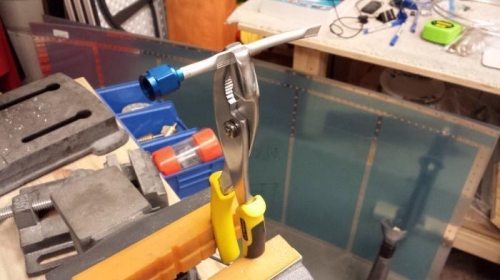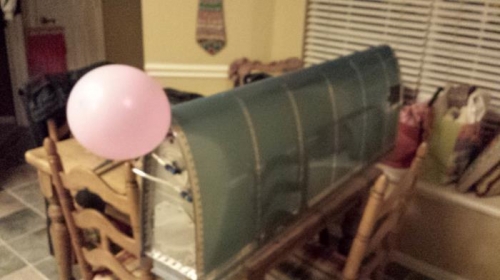
|

|
|

|
Jims RV-8

|
Date: 12-10-2013
|
Number of Hours: 2.00
|
Manual Reference: 7-8
|
Brief Description: test right fuel tank...kinda...
|

|
I have been putting this chore off long enough - so I decided to bite the bullet and since I picked up some balloons – I was now ready to leak-test the tanks. I am also spurred to test the tanks as I am getting close to needing the tanks to go on the wings! I never dreamed it would take this long, but I guess finding leaks is relatively fast – NOT finding them takes more time… J
So, I opened up the “leak test kit” package from Van’s - It consists of a page of instructions, an a few plugs...and the air valve. The instructions were very informative and dispelled a preconceived notion. My preconceived notion was that the balloon had to “hold air” for and extended time during the test phase, throughout all know pressure and temperature changes, in order to prove that the tank was airproof, and therefore fuel leak-proof. I guess my fertile mind had conceived this notion based on builder-log research. However, the instructions clearly state that the process is to plug all holes except one, that has the balloon attached to it, and that the balloon’s sole purpose, is to keep me from blowing out the tank. Evidently, the tank is air-tested at close to 1 PSI – and if the balloon wasn’t there – one might over pressurize their tank and blow it out. After the balloon is inflated on the tank, soapy water is dribbled over the rivets to make sure that there are no leaks. That’s it – no discussion of how long the balloon must remain blown up, etc. They also say that you can tape over the fuel cap with duct tape, but don’t worry about any leaks around the fuel cap filler. Ok, Rolling right along…
|

|

making the plug
|

|

pink balloons are good luck, right?
|

|
|

|

|

|
|

|

|
Copyright © 2001-2024 Matronics. All Rights Reserved.
|

